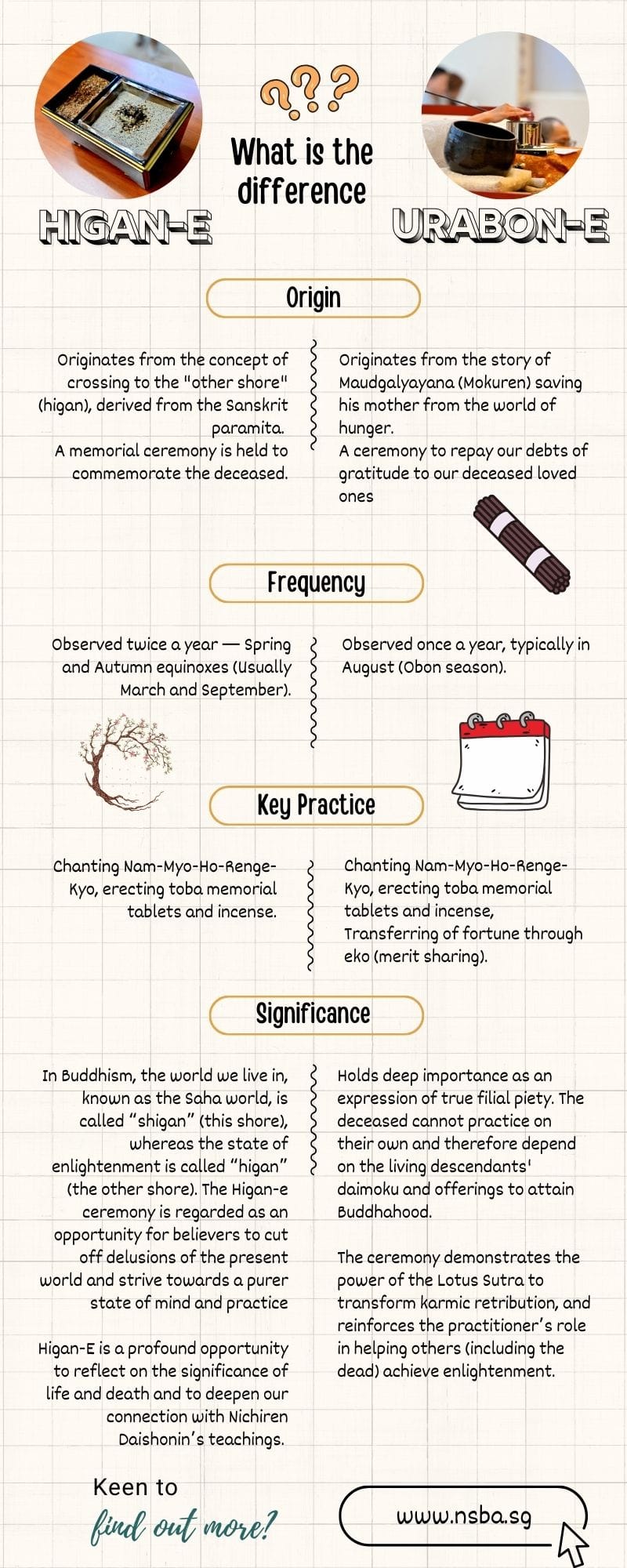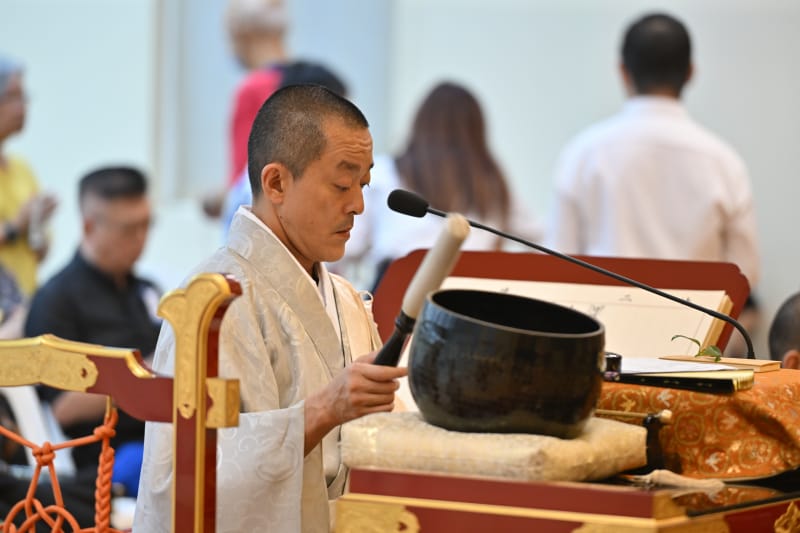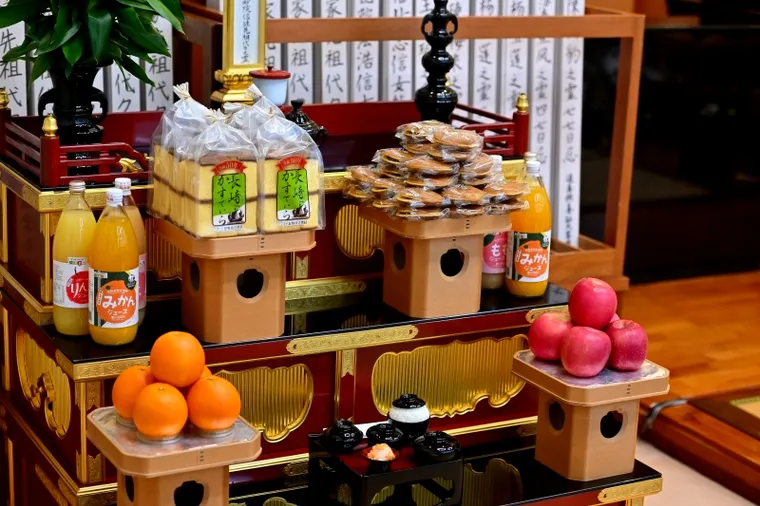Across cultures and traditions, many people seek ways to remember and honor their loved ones who have passed on.
As practitioners of Nichiren Shoshu Buddhism, we offer memorial prayers to our departed loved ones twice a day, during the 5th prayer of our morning and evening gongyo.
During the prayer, we not only honour their memory by reciting their names silently in our hearts, but we also pray for their eventual enlightenment. We offer gratitude and appreciation for the lives that they have lived, and the impact that they have had on our lives. We are grateful for the knowledge and wisdom which they have imparted, and for some of us, for being the impetus for us to start practicing.
During anniversaries and special memorial periods like Urabon and Higan-e, we also erect Toba tablets for our departed loved ones in temple. By doing so, the deceased can receive immense benefits just as we can by chanting Daimoku.
Difference between Higan-E and Urabon-E ceremonies
Both the Higan-e and Urabon-e ceremonies are important observances in Nichiren Shoshu. During these ceremonies, believers erect Toba memorial tablets and offer incense in honour of their ancestors and the deceased.
However, did you know that each ceremony carries a distinct significance?

About the Higan-E Ceremony

Extract from guidance by Reverend Shingaku Kato on the occasion of the Autumn Higan-E Ceremony on September 2024, Kaimyo Magazine Issue 127
What is the Higan-e Ceremony and when is it observed?
The Higan-e Ceremony is a Buddhist memorial service held during the spring and autumn equinoxes, in March and September. These two days are when daylight and darkness are perfectly balanced, symbolising harmony and the interconnection between life and death.
In Nichiren Shoshu Buddhism, believers gather on these days to offer prayers for their deceased ancestors, reflecting on their lives and the spiritual roles they play in guiding us on our path to enlightenment.
Why is the Higan-e Ceremony significant in Nichiren Shoshu Buddhism?
This ceremony is more than a formality. By participating, believers strengthen their connection with their ancestors and reaffirm their own dedication to practising True Buddhism.
It reminds practitioners that life and death are inseparable, and that the merits we accumulate in this lifetime are essential for reaching enlightenment after death.
What does the term “Higan” mean?
“Higan” comes from the Sanskrit word paramita, meaning “to cross over” or “arriving at the other shore.” In Buddhist thought, our current world (the saha world), is considered “this shore,” a place filled with suffering and delusion caused by earthly desires and karma. The “other shore” represents enlightenment: a realm of eternal peace and happiness, free from the cycle of birth and death.
How does the Higan-e Ceremony benefit both the living and the deceased?
By making offerings to the Gohonzon, conducting memorial services for ancestors, and practising shakubuku (sharing True Buddhism with others), practitioners accumulate great benefit. This benefit extends not only to themselves but also to their departed loved ones, helping guide them toward enlightenment and creating favourable causes for both to reach the “other shore.”
About the Urabon-E Ceremony
Extract from guidance by Reverend Shingaku Kato on the occasion of the Urabon-E Ceremony on August 2024, Kaimyo Magazine Issue 127
What is the Urabon-e Ceremony?
The Urabon-e Ceremony originates from the story of the Venerable Maudgalyayana, who sought to save his mother Shodai-nyo. Because of her greed and stinginess in past lives, she had fallen into the world of Hunger for five hundred lifetimes. Initially, Maudgalyayana could not help her attain Buddhahood because he was not yet a votary of the Lotus Sutra. Later, after embracing the Lotus Sutra and chanting Nam-myoho-renge-kyo at the eight-year assembly on Eagle Peak, he became a Buddha, and at that moment, his mother attained Buddhahood as well.
Why is chanting and making offerings important in this ceremony?
According to Nichiren Daishonin, when making offerings of food to hungry spirits, practitioners should recite a specific passage from the Lotus Sutra and chant Nam-myoho-renge-kyo for their repose. This is because the deceased cannot chant for themselves; by chanting and making offerings on their behalf, we help them extinguish suffering and advance toward Buddhahood.
What is the significance of erecting a Toba?
Erecting a Toba during the Urabon-e Ceremony has twofold merit: it helps the deceased attain Buddhahood and also enables those participating to extinguish negative karma from past lifetimes.
New to Nichiren Shoshu? Read more about us here.
We're most happy to welcome you to Kaimyo-in, do reach out to us here so we can assist you directly!


